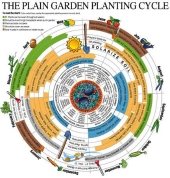





Clover Love wrote:First I heard about paleo, then a week+ later, GAPS (Gut And Psychology Syndrome, soon to have a Gut And Physiology Syndrome edition), then days later WAPF.
The thing I balked at about paleo is that I think paleolithic peoples probably ate everything edible, including grains, legumes, and tubers, but think about it, small amounts and strictly seasonal. I also guess that a lot of the grains went to fermented drinks (which I then think led to agriculture to increase fermented drink availability, which led to the first AA chapter, etc...). So, I think that paleo is a great way to halt the disaster of the SAD (Standard American Diet) and reverse much of the damage, but I think that GAPS is even better at the healing part of that. Once the healing is done, I look forward to finding where my body does the best using paleo and WAPF as loose guidelines and food preparation help.
I love the podcast, Latest in Paleo. The host often states that there is a certain fluidity to paleo, less dogmatic and more open to using the information that we gain through further study and personalized results.
I'm loosing weight and seeing dramatic health improvements and now my friend who is immobilized with MS has agreed to allow me to work this healing magic on/with her.
I'll report back in a few months on our progress! FTR, I am moving slowly into GAPS by eating 'full GAPS' minus dairy (which means I'm eating paleo) and looking forward to the 'intro diet', esp to get dairy back, I definitely react to dairy now.
